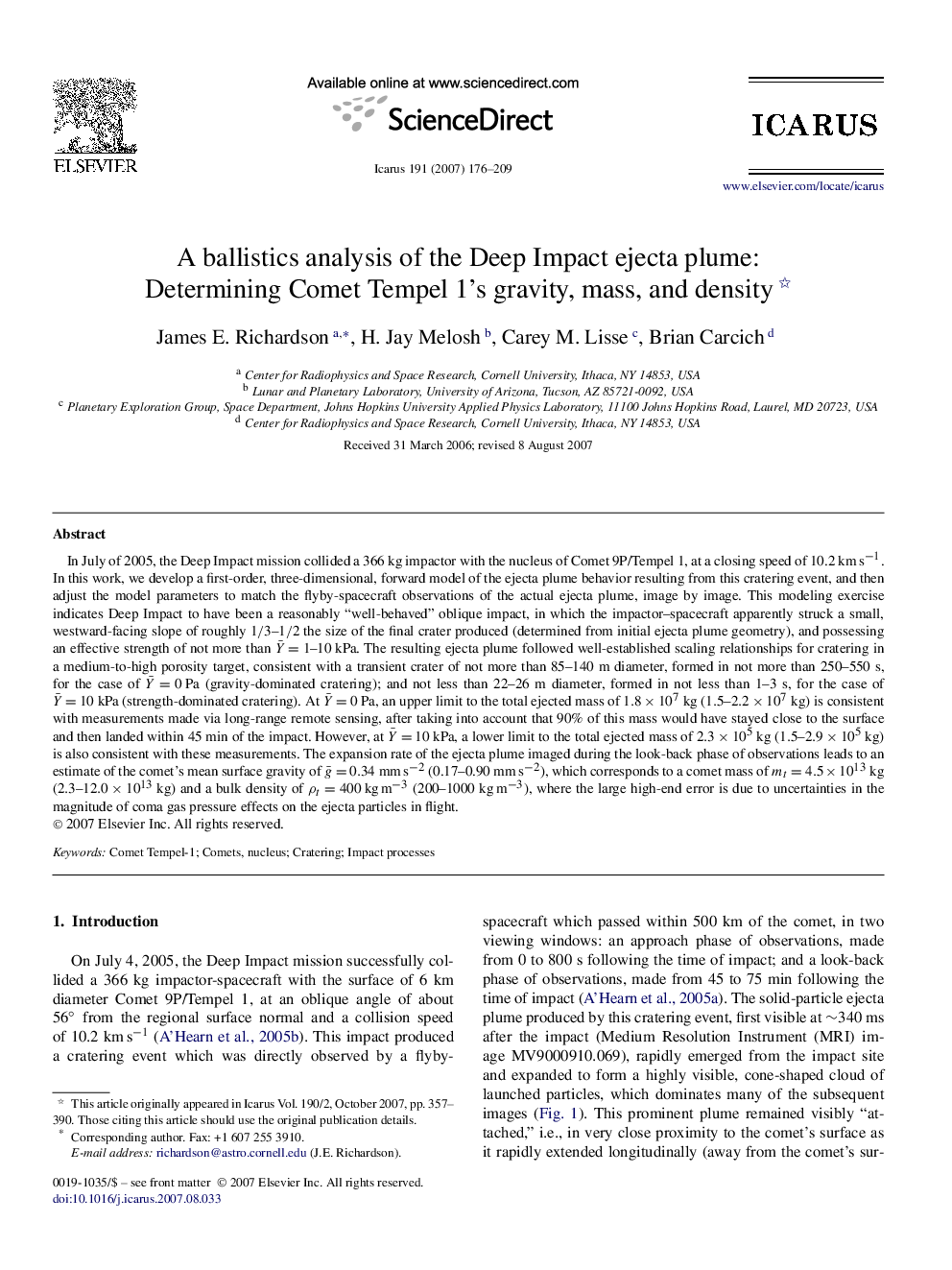| Article ID | Journal | Published Year | Pages | File Type |
|---|---|---|---|---|
| 1775245 | Icarus | 2007 | 34 Pages |
Abstract
In July of 2005, the Deep Impact mission collided a 366 kg impactor with the nucleus of Comet 9P/Tempel 1, at a closing speed of 10.2 kmâsâ1. In this work, we develop a first-order, three-dimensional, forward model of the ejecta plume behavior resulting from this cratering event, and then adjust the model parameters to match the flyby-spacecraft observations of the actual ejecta plume, image by image. This modeling exercise indicates Deep Impact to have been a reasonably “well-behaved” oblique impact, in which the impactor-spacecraft apparently struck a small, westward-facing slope of roughly 1/3-1/2 the size of the final crater produced (determined from initial ejecta plume geometry), and possessing an effective strength of not more than Y¯=1-10 kPa. The resulting ejecta plume followed well-established scaling relationships for cratering in a medium-to-high porosity target, consistent with a transient crater of not more than 85-140 m diameter, formed in not more than 250-550 s, for the case of Y¯=0 Pa (gravity-dominated cratering); and not less than 22-26 m diameter, formed in not less than 1-3 s, for the case of Y¯=10 kPa (strength-dominated cratering). At Y¯=0 Pa, an upper limit to the total ejected mass of 1.8Ã107 kg (1.5-2.2Ã107 kg) is consistent with measurements made via long-range remote sensing, after taking into account that 90% of this mass would have stayed close to the surface and then landed within 45 min of the impact. However, at Y¯=10 kPa, a lower limit to the total ejected mass of 2.3Ã105 kg (1.5-2.9Ã105 kg) is also consistent with these measurements. The expansion rate of the ejecta plume imaged during the look-back phase of observations leads to an estimate of the comet's mean surface gravity of g¯=0.34 mmsâ2 (0.17-0.90 mmâsâ2), which corresponds to a comet mass of mt=4.5Ã1013 kg (2.3-12.0Ã1013 kg) and a bulk density of Ït=400 kgmâ3 (200-1000 kgâmâ3), where the large high-end error is due to uncertainties in the magnitude of coma gas pressure effects on the ejecta particles in flight.
Related Topics
Physical Sciences and Engineering
Earth and Planetary Sciences
Space and Planetary Science
Authors
James E. Richardson, H. Jay Melosh, Carey M. Lisse, Brian Carcich,
